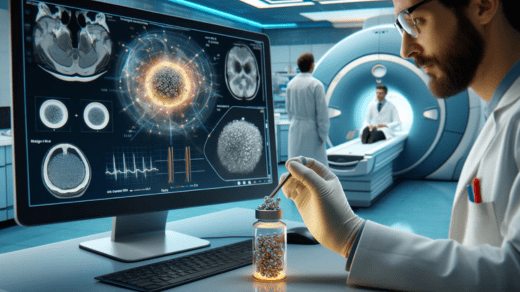The Tiny Revolution: How Nanomedicine is Changing Healthcare
Nanomedicine, a field that harnesses the power of nanotechnology to address medical challenges, has long been heralded as the future of healthcare. But is this future already here?
Many people ask, “Is nanomedicine being used today?” The answer is a resounding yes. While still in its early stages, nanomedicine is already making significant strides in various medical fields. From drug delivery systems that target specific cells to innovative imaging techniques, the applications of nanomedicine are rapidly expanding.
One of the most promising areas is the use of nanoparticles for targeted drug delivery. Traditional chemotherapy, for instance, often affects healthy cells alongside cancerous ones, leading to debilitating side effects like hair loss, nausea, and a weakened immune system. Nanoparticle-based drug delivery systems, however, can be engineered to deliver medication directly to cancer cells, minimizing harm to healthy tissue. This targeted approach increases treatment efficacy and significantly reduces side effects for patients, leading to better treatment outcomes and a higher quality of life during treatment.
The Power of Tiny Magnets: Revolutionizing Cancer Detection
Early and accurate diagnosis is crucial for successful cancer treatment. This is where nanomedicine steps in with another groundbreaking application: magnetic nanoparticles for cancer imaging. This technique utilizes the unique properties of magnetic nanoparticles to enhance the sensitivity and accuracy of cancer detection.
These nanoparticles, often coated with biocompatible materials and designed to target specific types of cancer cells, are injected into the bloodstream and guided towards the tumor site using external magnetic fields. Once accumulated within the tumor, they act as contrast agents, highlighting cancerous cells with remarkable precision during imaging procedures like MRI. This enhanced visibility allows for earlier detection of tumors, even at stages where traditional imaging techniques might fall short. Early detection is paramount in cancer treatment, as it significantly increases the chances of successful treatment and survival.
Beyond Imaging: Expanding Horizons of Nanomedicine
The potential of nanomedicine extends far beyond drug delivery and imaging. Researchers are exploring its application in a wide range of medical fields, pushing the boundaries of what’s possible in healthcare:
- Regenerative Medicine: Nanomaterials can act as scaffolds for tissue regeneration, promoting the growth of new cells and repairing damaged tissues. This has incredible potential for treating conditions like spinal cord injuries, bone defects, and organ damage.
- Infectious Disease Treatment: Nanoparticles can deliver antibiotics or antiviral drugs directly to infected cells, increasing treatment efficacy and combating antibiotic resistance.
- Vaccine Development: Nanomaterials show promise as adjuvants in vaccines, enhancing the body’s immune response and improving vaccine effectiveness.
- Biosensors for Early Diagnosis: Nanotechnology plays a crucial role in developing highly sensitive biosensors that can detect disease biomarkers in the body at very early stages, paving the way for timely intervention and better disease management.
Overcoming Challenges: Safety and Scalability
One of the key challenges in nanomedicine is ensuring the safety of nanoparticles for human use. Researchers are meticulously studying the long-term effects of nanoparticles on the body, investigating their interactions with cells, tissues, and organs. Developing strategies to minimize any potential risks, such as ensuring their safe elimination from the body after they’ve served their purpose, is crucial for the advancement of the field. Another hurdle is scalability – translating promising laboratory results into large-scale production of nanomedicines at an affordable cost. Developing cost-effective manufacturing processes is essential for making these groundbreaking treatments accessible to a wider patient population.
The Promise of Personalized Medicine
Nanomedicine holds immense potential for personalized medicine – tailoring treatments to an individual’s unique genetic makeup and disease profile. Nanoparticles can be engineered to carry specific combinations of drugs or therapeutic agents, allowing for highly targeted and customized therapies. This personalized approach maximizes treatment efficacy while minimizing side effects, ushering in a new era of healthcare tailored to the individual.
Investing in the Future of Healthcare
Recognizing the transformative potential of nanomedicine, governments and private organizations worldwide are investing heavily in research and development. Collaborative efforts between scientists, engineers, and clinicians are driving innovation and accelerating the translation of nanomedical advancements from the laboratory to the clinic. These collaborations are fostering a dynamic environment for breakthroughs, paving the way for a future where nanomedicine revolutionizes healthcare as we know it.
A Bright Future Beckons
While challenges remain in terms of safety, scalability, and regulatory approval, the future of nanomedicine shines bright. With ongoing research and development, this revolutionary field holds immense promise for transforming healthcare and improving the lives of patients worldwide. As we delve deeper into the nanoscale, we unlock new possibilities for targeted therapies, personalized medicine, and ultimately, a healthier future for all.














Post Comment
You must be logged in to post a comment.